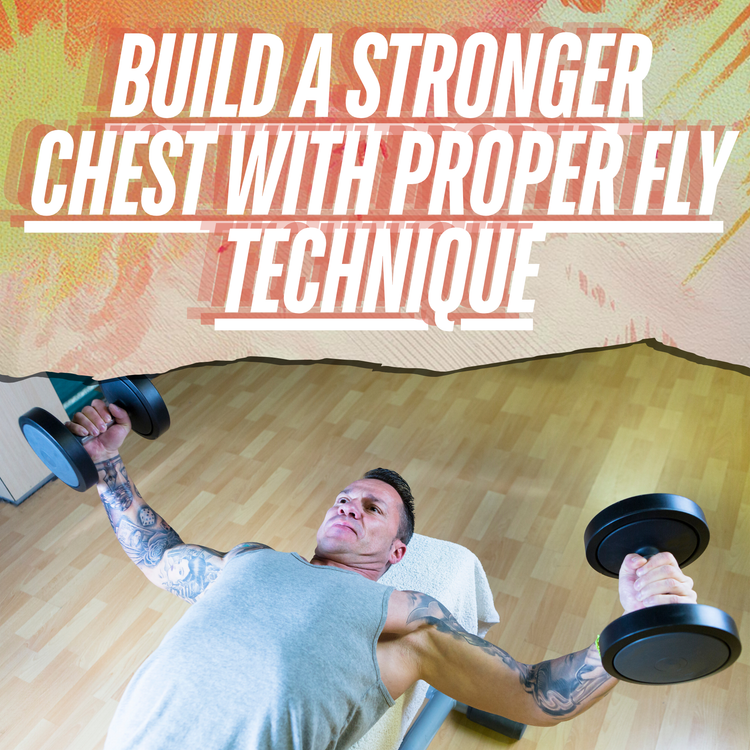Dumbbell Fly Guide: Build a Stronger Chest with Proper Technique

Welcome to your ultimate guide on mastering the dumbbell fly, an exercise that is a popular exercise in home workouts. The dumbbell fly is a fantastic way to target your chest muscles, helping you build strength and improve posture. In this guide, we'll explore the benefits of the dumbbell fly, teach you how to perform it safely, and explore how to choose the right equipment. We'll also discuss setting up your home gym and recommend other exercises to improve your routine.
Benefits of Dumbbell Fly
The dumbbell fly is primarily known for its ability to target the chest muscles, specifically the pectorals. However, the benefits extend beyond just chest development:
-
Chest Development: The motion of the dumbbell fly stretches and contracts the chest muscles, helping muscles grow and become more defined.
-
Improved Strength: By engaging the chest, shoulders, and arms, this exercise helps increase overall upper body strength.
-
Enhanced Posture: Strengthening the chest and shoulders can contribute to better posture, lowering the chance of back and neck pain.
For a broader understanding of the benefits associated with strength training, you can visit Strength training: Get stronger, leaner, healthier - Mayo Clinic.
How to Perform a Dumbbell Fly Safely
Learning the dumbbell fly is a great way to improve your chest workout, but it's crucial to perform it correctly to avoid injuries. Here's a step-by-step guide to ensure you're doing it safely:
-
Set Up: Begin by selecting a pair of dumbbells that you can comfortably lift. Position yourself on a weight bench, lying flat on your back. Ensure your feet are firmly planted on the floor for stability.
-
Grip and Position: Hold a dumbbell in each hand with your palms facing each other. Extend your arms above your chest, keeping a slight bend in your elbows to protect your joints.
-
Execution: Slowly lower the dumbbells in a wide arc until your arms are parallel to the floor. Keep the movement controlled and avoid locking your elbows.
-
Return to Start: Bring the dumbbells back to the starting position using the same arc. Focus on squeezing your chest muscles as you lift.
-
Breathing: Inhale as you lower the dumbbells and exhale as you lift them back up.
Remember, form is key. Stay in control during the exercise and don't use momentum. If you're new to this exercise, start with lighter weights and gradually increase as your strength improves.
Choosing the Right Dumbbells
Selecting the right dumbbells is essential for getting the most out of your workout. Here are some factors to consider:
-
Weight Range: Choose a weight that challenges you but allows you to maintain proper form. For many, starting with lighter weights and gradually progressing to heavier ones, like 50 pound dumbbells, is ideal.
-
Material: Dumbbells come in various materials, such as rubber-coated or metal. Rubber-coated dumbbells are often preferred for home workouts due to their durability and floor protection.
-
Grip Comfort: Ensure the grip is comfortable and non-slip to prevent accidents during your workout.
For more detailed guidance on selecting the right weights, check out this expert advice on choosing dumbbells. Choosing the right dumbbells can greatly improve your workout and keep you safe.
Setting Up Your Home Gym with a Dumbbell Set Rack
Creating a well-organized home gym is key to maximizing your workout efficiency and maintaining safety. A tidy space not only motivates you to exercise but also makes sure your equipment is easy to reach. Here's how a dumbbell set rack can help you achieve this:
-
Space-Saving: A dumbbell set rack helps you store your dumbbells neatly, saving valuable floor space and preventing clutter.
-
Easy Access: Having your dumbbells organized on a rack allows you to quickly grab the weights you need without rummaging through a pile.
-
Safety: Keeping your dumbbells on a rack reduces the risk of tripping over loose weights, a common cause of home workout injuries.
-
Durability: A good quality rack protects your dumbbells from damage, prolonging their lifespan.
For more tips on maintaining a tidy home gym, check out 11 Ways to Store Workout Equipment When Not In Use.
Conclusion and Next Steps
In wrapping up our deep dive into the dumbbell fly, it's clear that this exercise offers a multitude of benefits. From targeting the chest muscles for better strength and posture to enhancing your overall fitness routine, the dumbbell fly is a versatile addition to any home workout. Remember these key points:
-
Proper form and technique are crucial for safety and effectiveness.
-
Choosing the right dumbbells, such as considering 50 pound dumbbells, can make a significant difference in your workout intensity.
-
Organizing your home gym with a dumbbell set rack can improve your workout space's safety and efficiency.
As you continue your fitness journey, consider exploring Living.Fit's digital workouts and high-quality home workout equipment, including gym mats and resistance bands, to further enhance your routine. These tools can provide variety and help you reach your fitness goals more effectively.
Complementary Exercises to Enhance Your Routine
To make the most out of your dumbbell fly workouts, it's beneficial to incorporate complementary exercises that target different muscle groups and add balance to your routine. Here are some suggestions:
-
Push-ups: A classic exercise that works well with dumbbell fly to strengthen the chest and triceps.
-
Resistance Band Rows: These can add variety and target your back muscles, creating a balanced upper body workout.
-
Plank Variations: Using a gym mat, incorporate planks to enhance core stability and strength.
-
Shoulder Press: This exercise can be performed with dumbbells to build shoulder strength and complement the chest workout.
By integrating these exercises into your routine, you can create a well-rounded workout that not only focuses on the chest but also improves overall body strength and balance. For more ideas and equipment, check out Living.Fit's home workout solutions.




